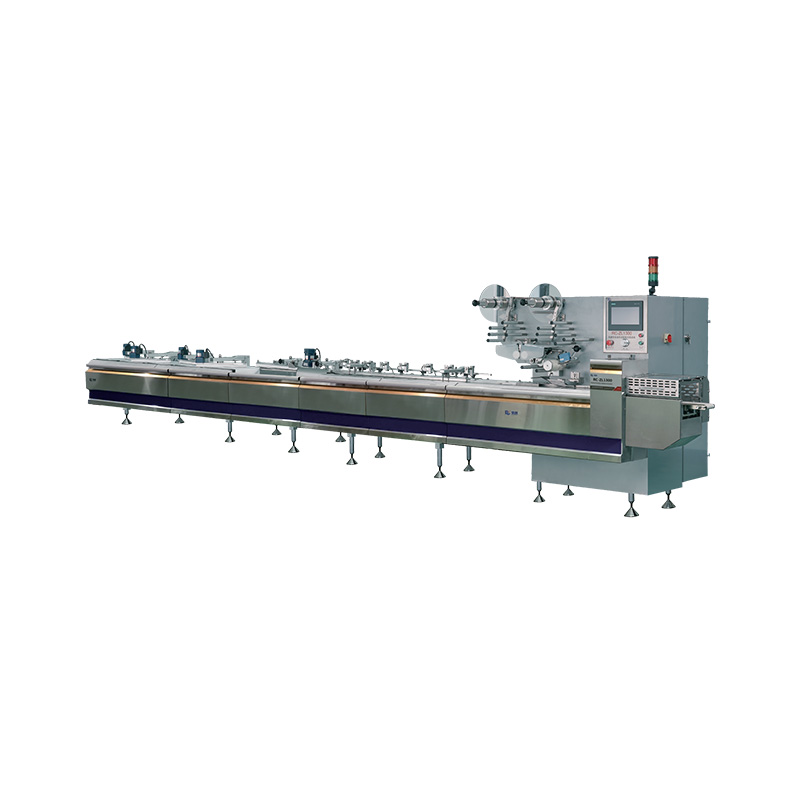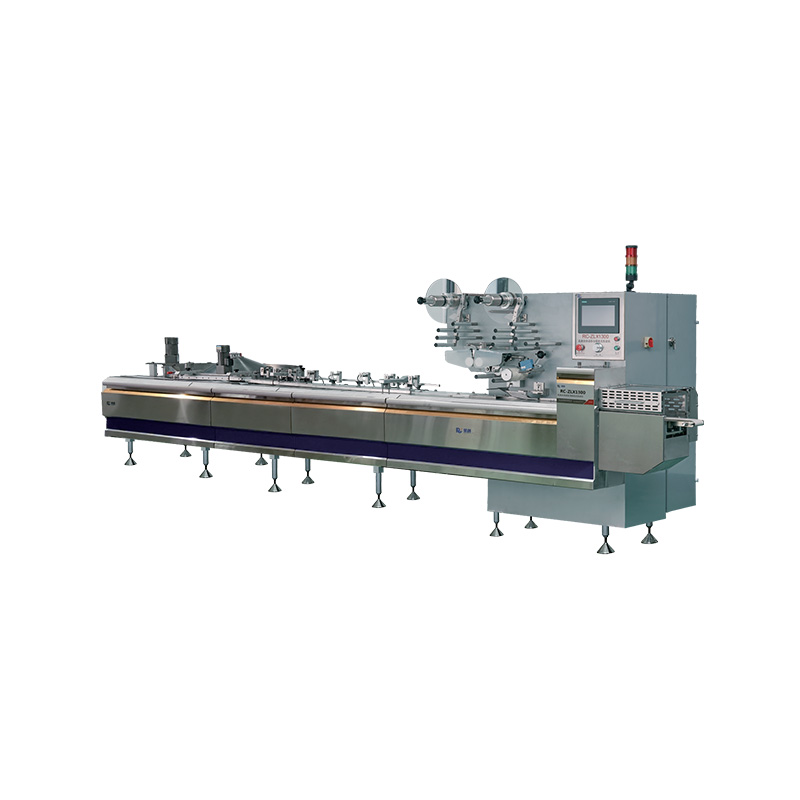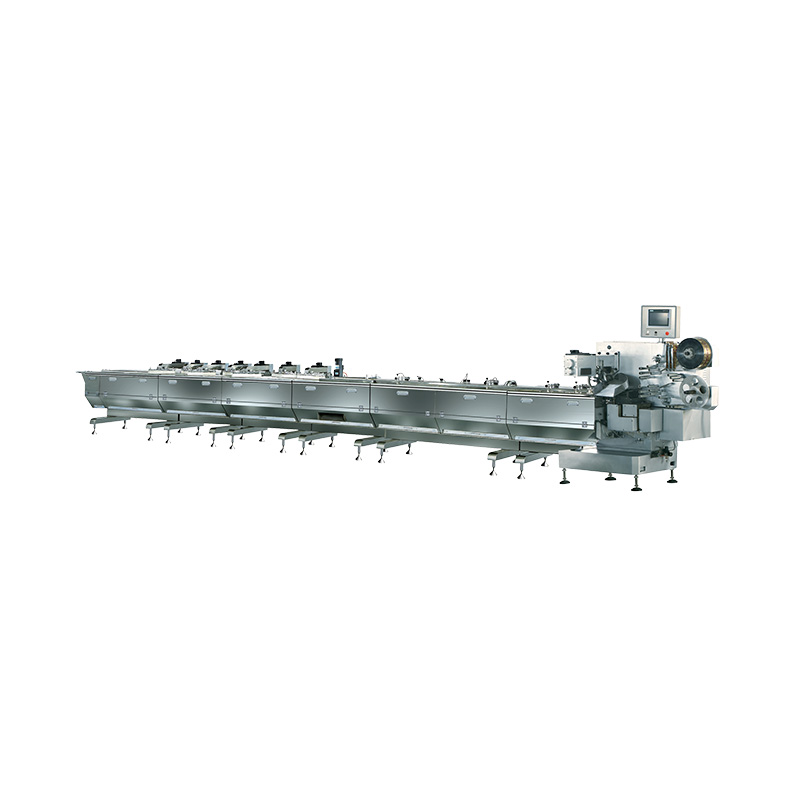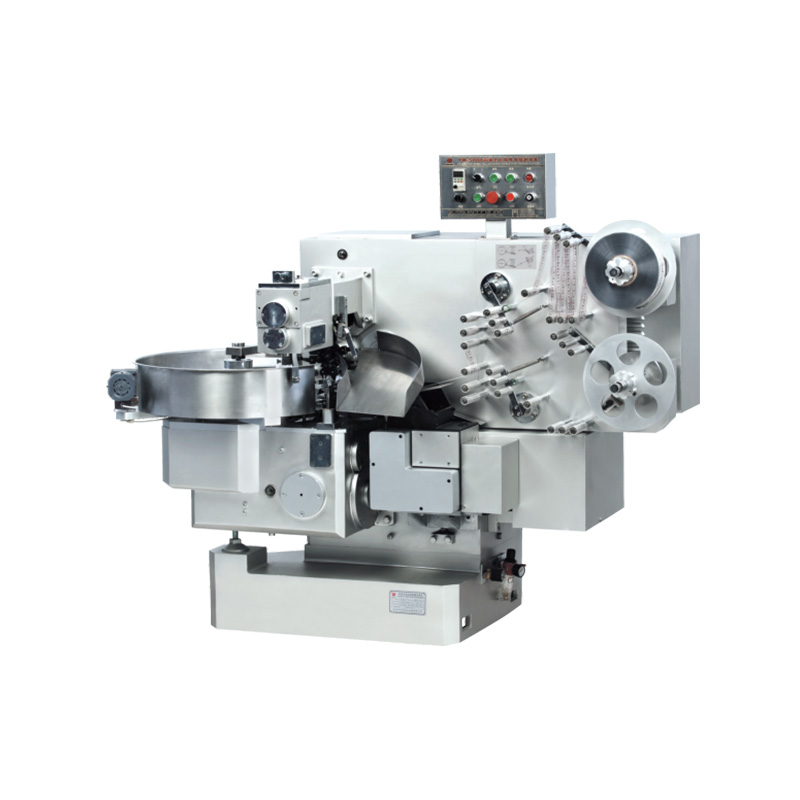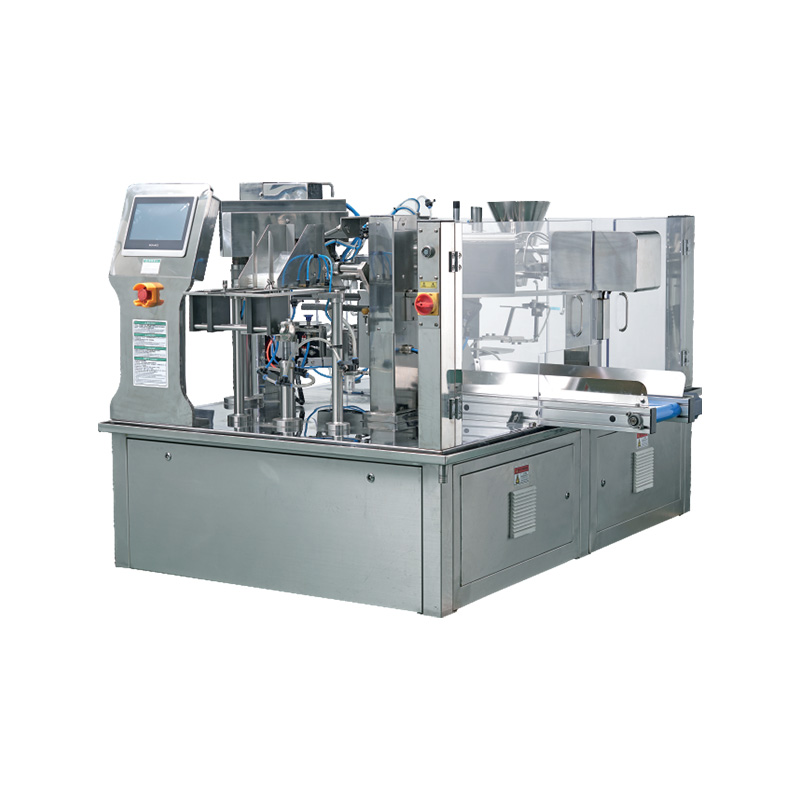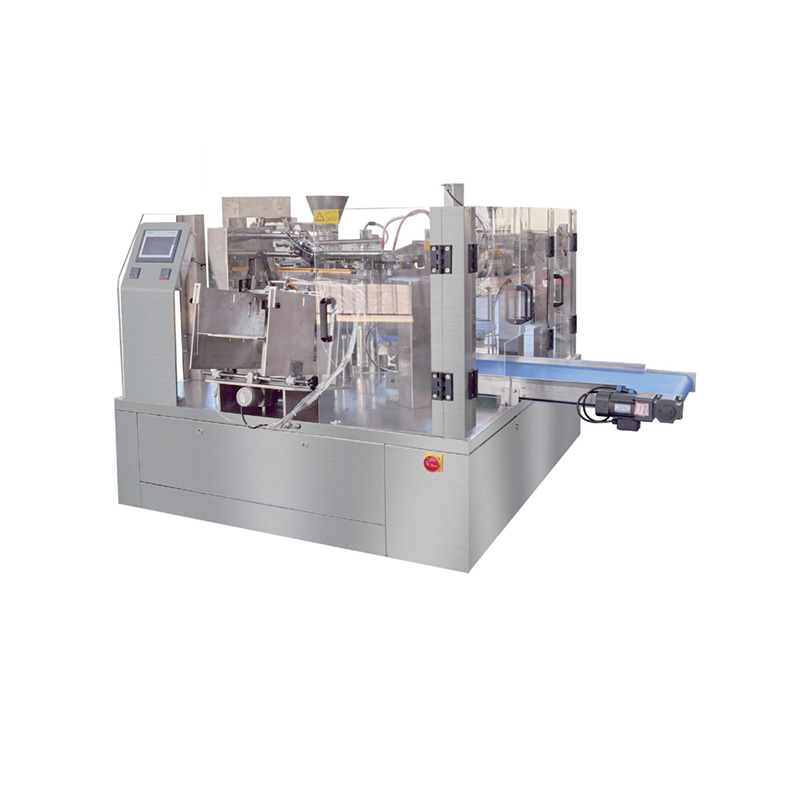Fully Automatic Conveyors: Features, Benefits, Types and more
What is Fully Automatic Conveyor?
A Fully Automatic Conveyor is an advanced material handling system designed to automatically transport goods or products from one point to another in a production or distribution line without the need for manual intervention. These conveyors are an essential part of modern automated manufacturing systems, facilitating efficient and seamless movement of materials, reducing the risk of human error, and increasing overall productivity.
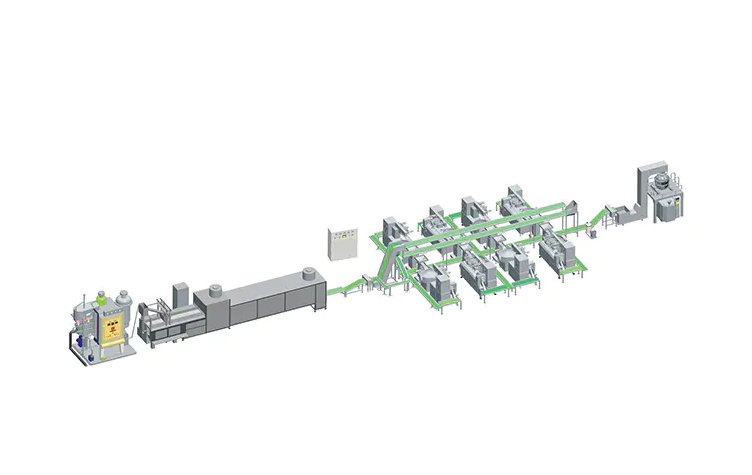
Key Characteristics of a Fully Automatic Conveyor
Automation: The key feature of a fully automatic conveyor is that it operates without human intervention. This reduces labor costs and ensures that products are moved efficiently and consistently across the production line.
Integration with Other Systems: Fully automatic conveyors are often integrated with other machines, sensors, and control systems in a factory or warehouse. This allows for better coordination of tasks and improves operational efficiency.
Variety of Applications: These conveyors are used in various industries such as food processing, packaging, automotive, electronics, and logistics. Depending on the application, fully automatic conveyors can be customized to transport a wide range of materials, from delicate products to heavy industrial goods.
Speed and Efficiency: Fully automatic conveyors are designed to handle high volumes of products quickly and efficiently. Their ability to operate continuously without breaks contributes significantly to increased production throughput.
Reduced Human Error: Since these conveyors operate automatically, the chances of mistakes or inefficiencies caused by human operators are minimized. This leads to more accurate and consistent operations.
How Does a Fully Automatic Conveyor Work?
A fully automatic conveyor is an essential component in modern production and manufacturing lines. Designed to streamline the movement of materials, products, or components from one stage of production to another, these systems help reduce labor costs, enhance efficiency, and improve overall workflow.
Key Components of a Fully Automatic Conveyor
A fully automatic conveyor system typically consists of several key components:
Conveyor Belt: The belt is the primary medium that transports items from one point to another. It is often made of durable materials designed to handle various weights and sizes.
Drive Mechanism: This includes motors, gear systems, and belts that provide the necessary power to move the conveyor belt. These mechanisms ensure that the system runs smoothly and efficiently.
Sensors and Control Systems: Automatic conveyors are equipped with sensors that detect the presence, size, and position of items. These sensors trigger the movement of the conveyor and provide real-time data to the control system, which then adjusts the speed or direction of the belt as needed.
Sorters and Diverting Mechanisms: For more complex systems, conveyors often include sorting or diverting mechanisms. These systems can direct products to different paths, allowing for automatic routing to specific areas or stations based on predetermined criteria.
Integrated Software: The control systems in automatic conveyors are often managed by specialized software that integrates with the production line. This software helps to monitor, track, and optimize the flow of goods through the conveyor system, ensuring efficiency and minimal downtime.
How a Fully Automatic Conveyor Functions
A fully automatic conveyor works by receiving signals from sensors that monitor the status of the products on the conveyor. These signals trigger the movement of the belt, which in turn moves the products along the desired route. Depending on the system's design, conveyors can be programmed to:
Adjust speed: The conveyor's speed may vary based on the type of product or production requirements. Faster speeds are suitable for high-volume production, while slower speeds may be used for delicate or high-precision tasks.
Change direction: Some conveyors are equipped with mechanisms that allow the belt to change direction automatically, facilitating more complex workflows and routing.
Detect items: Sensors detect when an item has reached a specific location on the conveyor and trigger the appropriate response, whether it be to halt the conveyor, adjust speed, or divert the item to another path.
Benefits of Fully Automatic Conveyors
Increased Efficiency: By automating the movement of materials and products, conveyors eliminate the need for manual handling, reducing human error and improving processing time.
Cost Savings: Automation reduces labor costs and the risk of injuries related to manual material handling, making it a cost-effective solution for manufacturers.
Flexibility: These conveyors can be customized to fit a wide range of production processes. They can be integrated with other automation systems and expanded or modified as needed.
Enhanced Precision: With advanced sensors and control systems, fully automatic conveyors ensure the precise handling and positioning of materials, which is critical in industries requiring high precision.
Improved Safety: Automation reduces the likelihood of accidents in the workplace by reducing human interaction with potentially hazardous machinery and processes.
Different Types of Fully Automatic Conveyors and Their Applications
Fully automatic conveyors are critical components in modern manufacturing, material handling, and logistics systems. They help automate the movement of goods across various stages of production, providing efficiency, consistency, and cost savings. There are different types of fully automatic conveyors, each designed for specific tasks and industries.
1. Belt Conveyors
Overview:
Belt conveyors are one of the most common types of conveyors used in fully automated systems. These conveyors use a continuous belt to transport materials or products along a path. The belt can be made from various materials, including rubber, fabric, or metal, depending on the load and the environment.
Applications:
Packaging Industry: Belt conveyors are widely used to transport products to packaging stations, where they can be labeled, boxed, or palletized.
Assembly Lines: In automotive or electronics assembly lines, belt conveyors move parts from one station to another, ensuring smooth and consistent workflows.
Food Processing: Belt conveyors transport raw food materials through various processing stages, such as washing, cutting, and packaging.
2. Roller Conveyors
Overview:
Roller conveyors use a series of rollers to move items. The rollers are either powered or gravity-fed, with powered roller conveyors being used for heavy loads or those requiring a controlled speed.
Applications:
Warehouse and Distribution Centers: Roller conveyors are perfect for moving packages, boxes, and crates. They are often used to connect various parts of the warehouse, including sorting areas and storage zones.
Logistics and E-commerce: These conveyors are used in logistics centers to quickly move products from one location to another for sorting or dispatching to customers.
Manufacturing: Roller conveyors are commonly used in assembly processes where heavy items need to be moved with ease.
3. Chain Conveyors
Overview:
Chain conveyors use a continuous chain to move products along a track. The chain is typically equipped with attachments or slats that hold the items, allowing them to be transported over long distances or steep inclines.
Applications:
Automotive Industry: Chain conveyors are essential in the automotive sector, especially for transporting heavy parts such as car frames, engines, and other large components.
Bulk Material Handling: Chain conveyors are ideal for transporting bulk materials, such as coal, grain, or scrap metal, where other conveyor types might not be suitable.
Heavy Manufacturing: Chain conveyors can handle bulky or heavy products in environments where durability is critical, such as steel mills or cement factories.
4. Spiral Conveyors
Overview:
Spiral conveyors are designed to move products vertically, making them ideal for situations where there is limited horizontal space. These conveyors use a helical structure to transport goods upward or downward in a continuous loop.
Applications:
Food Processing: Spiral conveyors are commonly used in food processing to move items between different floors of a factory, such as moving frozen food from a freezing area to packaging lines.
Pharmaceutical Industry: They are used for vertical transport of medical products, such as bottles or containers, ensuring a continuous flow within tight spaces.
Logistics: In distribution centers, spiral conveyors are used for transferring small packages or parcels between different warehouse levels.
5. Pneumatic Conveyors
Overview:
Pneumatic conveyors use air pressure to transport materials through tubes or pipes. These systems are highly effective for handling fine powders, pellets, or bulk materials that need to be moved over long distances or through difficult-to-access spaces.
Applications:
Food and Pharmaceutical Industries: Pneumatic conveyors are used to move powders, granules, or other light, bulk materials, including flour, sugar, and medications, without contaminating them.
Chemical Manufacturing: They are used to move raw materials such as chemicals, granules, and powders safely and efficiently.
Waste Management: Pneumatic conveyors are often employed to transport waste materials in industrial plants, providing a safe, enclosed way to handle materials.
6. Vibra Conveyors
Overview:
Vibra conveyors use vibration to move materials along a flat or inclined surface. These conveyors are often used in environments that require minimal noise, such as in food or pharmaceutical industries.
Applications:
Food Processing: Vibra conveyors are used in the food industry for moving delicate products without causing damage or contamination.
Packaging: They are used in packaging lines where the product needs to be moved gently but quickly to avoid crushing or damaging.
Pharmaceutical and Chemical Industries: Vibra conveyors help transport fragile materials like tablets or powdered chemicals, maintaining their integrity during the process.
7. Magnetic Conveyors
Overview:
Magnetic conveyors are used to move ferrous materials by utilizing magnets to pull the items along a track. This type of conveyor is often used for transporting metal objects that would be difficult to move using other conveyor types.
Applications:
Automotive Manufacturing: Magnetic conveyors are commonly used in automotive plants for transporting metal parts, such as car frames, engines, or transmissions.
Metal Recycling: Magnetic conveyors play a significant role in the recycling industry, where they are used to move scrap metal or to separate metal parts from non-metal materials.
Electronics Manufacturing: In electronics manufacturing, magnetic conveyors are used to move metal components, including circuit boards and metal housings.
8. Bucket Elevators
Overview:
Bucket elevators are a type of conveyor that uses vertical buckets to move materials. These systems are ideal for handling bulk materials and can transport items from lower levels to higher levels efficiently.
Applications:
Agricultural Industry: Bucket elevators are often used to move grains, seeds, and other agricultural products, such as wheat or corn, from one location to another.
Mining and Mineral Processing: Bucket elevators are used to transport minerals, ores, or other materials that are extracted from mines or quarries.
Food Processing: In food factories, bucket elevators are used to move bulk items like rice, sugar, or beans to different production stages.
| Type of Conveyor | Overview | Applications |
|---|---|---|
| Belt Conveyors | Uses a continuous belt to transport materials. | - Packaging Industry - Assembly Lines - Food Processing |
| Roller Conveyors | Uses a series of rollers (powered or gravity-fed) to move items. | - Warehouse and Distribution Centers - Logistics and E-commerce - Manufacturing |
| Chain Conveyors | Uses a continuous chain to move products, often with attachments or slats. | - Automotive Industry - Bulk Material Handling - Heavy Manufacturing |
| Spiral Conveyors | Moves products vertically using a helical structure. | - Food Processing - Pharmaceutical Industry - Logistics |
| Pneumatic Conveyors | Uses air pressure to move materials through tubes or pipes. | - Food and Pharmaceutical Industries - Chemical Manufacturing - Waste Management |
| Vibra Conveyors | Uses vibration to move materials along a surface. | - Food Processing - Packaging - Pharmaceutical and Chemical Industries |
| Magnetic Conveyors | Uses magnets to move ferrous materials. | - Automotive Manufacturing - Metal Recycling - Electronics Manufacturing |
| Bucket Elevators | Uses vertical buckets to move materials. | - Agricultural Industry - Mining and Mineral Processing - Food Processing |
How to Choose the Right Fully Automatic Conveyor for Your Business
Choosing the right fully automatic conveyor for your business is essential to ensuring smooth and efficient operations in your production or material handling processes. With so many options available, selecting the ideal conveyor system can be a challenging task. However, by considering key factors such as the type of products, the layout of your facility, and your specific operational needs, you can make a well-informed decision that will maximize productivity and minimize downtime.
1. Understand Your Requirements
Before selecting a conveyor system, it's crucial to assess the specific needs of your business. Consider the following:
Type of Product: What type of materials or products will the conveyor be transporting? The size, weight, and shape of your products will play a significant role in determining which conveyor type is most appropriate. For example, lightweight products might be well-suited for belt conveyors, while heavy or bulky items may require chain conveyors.
Volume: The scale of your operations will affect your conveyor choice. High-volume production lines often need faster, more robust conveyors, while low-to-medium-volume lines may require more flexible and cost-effective solutions.
Distance: Consider the distance your materials need to travel. For short distances, simpler conveyors may suffice, while long-distance transportation might require more advanced systems such as pneumatic conveyors or spiral conveyors to efficiently move products across varying elevations.
2. Evaluate Conveyor Types
There are several different types of fully automatic conveyors, each suited to specific tasks. Understanding these types can help you choose the best fit for your operation:
Belt Conveyors: Ideal for transporting lightweight or flat products over moderate distances. They are easy to install and maintain, making them a popular choice in many industries.
Roller Conveyors: Best for moving heavy products and packages, roller conveyors work well in distribution centers and warehouses where items need to be moved quickly and efficiently.
Chain Conveyors: Designed for heavy-duty applications, chain conveyors are often used to transport bulky materials or products that require a lot of support.
Pneumatic Conveyors: If your business deals with small particles, powders, or fragile items, pneumatic conveyors can provide an effective solution by using air pressure to move materials.
Spiral Conveyors: When vertical space is limited, spiral conveyors can help transport products between different levels of a facility while saving valuable floor space.
3. Consider the Environmental Factors
The environment in which the conveyor will operate plays a crucial role in the decision-making process. Think about the following environmental factors:
Temperature: If your business operates in environments with extreme temperatures (e.g., cold storage or high-heat areas), you'll need a conveyor that can withstand these conditions. Certain conveyors are built to resist temperature fluctuations and ensure optimal performance even in harsh environments.
Hygiene Requirements: For industries like food processing or pharmaceuticals, hygiene is a top priority. Choosing a conveyor made from easy-to-clean materials and designed to meet regulatory standards is essential to avoid contamination and maintain product integrity.
Space Limitations: The layout of your facility and available space will determine the size and configuration of the conveyor system. If space is tight, consider conveyors that offer flexibility, such as modular systems or conveyors designed for vertical transport.
4. Maintenance and Durability
Choosing a conveyor system that is reliable and easy to maintain can save you time and money in the long run. Consider the following:
Durability: A conveyor that is built to last will reduce downtime and repair costs. Choose a system made from high-quality materials that are designed to withstand the wear and tear of constant use.
Maintenance Needs: Some conveyor systems require more frequent maintenance than others. Be sure to choose a system that aligns with your team's capacity for upkeep. For example, belt conveyors may need regular belt adjustments, while roller conveyors often require lubrication and cleaning.
Ease of Repair: When selecting a conveyor, consider the availability of spare parts and the ease with which they can be replaced. Some systems may have more complex parts, which can be costly and time-consuming to replace.
5. Automation and Integration
Fully automatic conveyors are part of larger automated systems that often need to integrate with other machinery. Consider how the conveyor will fit into your existing processes:
Automation Compatibility: Does the conveyor system support integration with other automation tools, such as sorting machines, robotics, or packaging stations? A fully integrated system will enhance overall efficiency and reduce the need for manual intervention.
Control Systems: The conveyor system's control mechanisms—whether they use sensors, programmable logic controllers (PLCs), or other systems—should match your production's needs. Advanced control systems can help optimize the speed, direction, and timing of your conveyor, ensuring it operates in sync with other equipment.
Energy Efficiency: Look for energy-efficient systems that help reduce operational costs. Some conveyors are designed with low-energy motors and other energy-saving features to minimize power consumption.
6. Budget Considerations
While it's important to invest in a high-quality conveyor system, it's equally important to stick to your budget. Keep in mind:
Initial Cost: Determine the initial investment required for the conveyor system, including installation and setup costs.
Operating Costs: Factor in the long-term operating costs of the conveyor, such as energy consumption, maintenance, and repair expenses. More energy-efficient and durable systems may have a higher upfront cost but will save money over time.
Return on Investment (ROI): Consider the potential ROI from investing in a fully automatic conveyor. If the conveyor improves efficiency, reduces labor costs, and increases throughput, the long-term savings may outweigh the initial investment.
7. Vendor and Support Services
Finally, choose a vendor that can provide not only high-quality products but also reliable support services. A reputable vendor should offer:
Technical Support: Access to prompt and professional technical support when issues arise.
Training: Proper training for your team on how to use and maintain the conveyor system.
Service Agreements: Consider vendors that offer maintenance contracts or service agreements to keep your conveyor in optimal condition.
Innovations and Trends in Fully Automatic Conveyor Technology
The world of fully automatic conveyor systems is evolving rapidly, with constant innovations and trends reshaping the way industries approach material handling, production efficiency, and automation. As businesses continue to seek ways to optimize their processes, reduce costs, and improve safety, new advancements in conveyor technology have emerged. These innovations not only boost operational performance but also ensure sustainability, flexibility, and integration with other modern systems.
1. Industry 4.0 and Smart Conveyors
Overview:
Industry 4.0, the fourth industrial revolution, emphasizes the integration of digital technologies, automation, and data exchange within manufacturing and production environments. Fully automatic conveyors are increasingly incorporating smart technologies, such as sensors, Internet of Things (IoT) devices, and artificial intelligence (AI), to create intelligent conveyor systems capable of adapting to real-time conditions.
Key Features:
Predictive Maintenance: With IoT sensors embedded in conveyor systems, predictive maintenance can be achieved. These sensors monitor the health of the conveyor, detecting issues before they lead to breakdowns, thus reducing downtime and minimizing costly repairs.
Real-time Data Analytics: Smart conveyors can collect and transmit data about product movement, conveyor performance, and system efficiency. This data can be analyzed to optimize workflow, track inventory, and improve decision-making.
Benefits:
Increased efficiency through real-time monitoring and automatic adjustments.
Reduced operational costs due to fewer unplanned maintenance events.
Enhanced ability to forecast system behavior and make data-driven decisions.
2. Robotic Integration and Automated Sorting
Overview:
Conveyor systems are increasingly being integrated with robotics to create highly automated and flexible production lines. Robots can handle complex tasks like sorting, picking, and packaging, seamlessly working in tandem with fully automatic conveyors to enhance productivity and reduce manual labor.
Key Features:
Automated Sorting: Automated sorting systems use conveyors equipped with smart sensors and robotic arms to automatically sort products based on size, weight, or other criteria. This integration eliminates the need for manual sorting, speeding up the process and minimizing errors.
Collaborative Robots (Cobots): Cobots work alongside human operators and conveyors to improve task efficiency. For instance, robots can automatically load or unload items from the conveyor, reducing strain on workers and increasing throughput.
Benefits:
Streamlined operations with minimal human intervention.
Higher throughput and faster processing times.
Improved workplace safety and ergonomics.
3. Energy-Efficient Conveyor Systems
Overview:
Sustainability is becoming an essential focus for industries across the globe, and conveyor systems are no exception. Innovations in energy-efficient conveyor technology are helping businesses reduce their carbon footprint and lower energy costs while maintaining optimal performance.
Key Features:
Low-Energy Motors: New conveyor systems are incorporating low-energy motors that consume less power while still providing the necessary force to transport products efficiently.
Regenerative Drives: Some modern conveyors now feature regenerative drives, which capture energy produced by the system (for example, during braking or slowing down) and redirect it back into the system, reducing overall energy consumption.
Lightweight Materials: The use of lightweight materials in conveyor construction reduces the energy required to move products, leading to less strain on motors and more efficient operation.
Benefits:
Reduced energy costs, contributing to a lower operational budget.
Contribution to environmental sustainability by lowering power consumption and carbon emissions.
Enhanced cost savings over the long term through energy-efficient design.
4. Flexible and Modular Conveyor Designs
Overview:
As industries become more dynamic, the demand for flexible and adaptable conveyor systems has grown. Modular conveyor systems are gaining popularity because of their ability to be easily customized and reconfigured based on the needs of the business.
Key Features:
Modular Components: Modular conveyors are designed with interchangeable components, allowing businesses to quickly adjust the layout, size, and design of their systems without requiring extensive re-engineering.
Scalability: These systems can be easily expanded to accommodate growing production volumes, making them ideal for businesses looking for long-term scalability.
Quick Setup and Adjustments: Modular systems allow for faster installation and modification compared to traditional conveyor systems, reducing downtime and improving flexibility.
Benefits:
High adaptability to changing production requirements and space configurations.
Faster installation and minimal disruption during system upgrades or changes.
Cost-effective, as businesses can expand their systems without needing to replace entire setups.
5. Integration with Artificial Intelligence (AI) and Machine Learning
Overview:
The integration of AI and machine learning with fully automatic conveyor systems is revolutionizing their capabilities. AI-driven systems can learn from historical data and optimize conveyor performance in real-time, leading to more efficient operations and smarter decision-making.
Key Features:
Automated Decision-Making: AI can analyze data from sensors, cameras, and other inputs to make real-time decisions about the speed, direction, or routing of materials on the conveyor. This leads to highly efficient and accurate operations.
Adaptive Controls: Machine learning algorithms can help the conveyor system adapt to varying conditions, such as changes in production volume or material types, improving flexibility and reducing the need for manual adjustments.
Benefits:
More intelligent decision-making, improving overall workflow efficiency.
Continuous optimization of conveyor operations, leading to better resource utilization.
Greater flexibility in dealing with changes in production and processing conditions.
6. Automated Palletizing and Depalletizing
Overview:
Palletizing and depalletizing are key tasks in many industries, and automation in these processes is becoming increasingly important. Fully automatic conveyors integrated with robotic systems can handle the entire palletizing and depalletizing process without human intervention.
Key Features:
Robotic Palletizing: Robots equipped with vision systems can automatically stack products on pallets, adjusting their movements based on product size and shape. This reduces labor costs and increases accuracy.
Automated Depalletizing: Similar to palletizing, automated depalletizing systems use robots or other machinery to remove items from pallets, feeding them directly onto conveyors for further processing.
Benefits:
Significant reduction in labor costs and human error.
Increased throughput and more consistent stacking and unstacking of products.
Enhanced operational efficiency by automating repetitive tasks.
7. Wearable Technology for Conveyor Maintenance
Overview:
Wearable technology is becoming a trend in industries relying on conveyor systems. Workers can now use smart wearable devices that monitor the health of conveyor systems in real-time and provide predictive maintenance alerts.
Key Features:
Wearable Sensors: Workers can wear devices that track vibration, temperature, and other metrics of conveyor systems, sending this data to a central system for analysis.
Real-time Alerts: These wearables alert maintenance teams immediately if a problem is detected, allowing for faster responses and preventing system downtime.
Benefits:
Improved predictive maintenance, leading to fewer breakdowns and reduced downtime.
Enhanced worker safety by providing alerts for potential issues before they escalate.
Increased system reliability and longevity.
Common Challenges with Fully Automatic Conveyors and How to Overcome Them
Fully automatic conveyors are a cornerstone of modern manufacturing, logistics, and distribution systems. They offer a wealth of benefits, including increased efficiency, reduced labor costs, and improved accuracy. However, like any complex machinery, they come with their own set of challenges. Understanding these potential issues and knowing how to address them can help you maintain a smooth and efficient operation.
1. Downtime Due to Mechanical Failures
Challenge:
Mechanical breakdowns are one of the most significant challenges associated with fully automatic conveyors. Whether due to wear and tear, improper maintenance, or faulty components, these failures can result in unplanned downtime, disrupting the entire production process.
Solution:
Regular Maintenance: Implement a comprehensive preventive maintenance schedule to check key components such as belts, motors, and rollers. Regular inspections can help identify early signs of wear and tear, reducing the likelihood of unexpected breakdowns.
Predictive Maintenance: Utilize advanced monitoring systems that track the performance of conveyors. Sensors embedded in the conveyor can detect abnormalities such as unusual vibrations, temperature increases, or belt misalignment. This data can help predict when a failure is imminent, allowing for preemptive repairs.
Training: Ensure that maintenance personnel are properly trained in diagnosing and addressing common conveyor issues. Their expertise can be crucial in identifying and resolving problems before they escalate.
2. Product Jamming or Misalignment
Challenge:
A common issue with conveyors is product jamming or misalignment, which occurs when items get stuck on the conveyor, causing the system to stop. This can happen for various reasons, such as improper loading, inconsistent product sizes, or miscalibrated sensors.
Solution:
Sensor Calibration: Ensure that sensors are properly calibrated to detect the correct positioning of products. This will help avoid jams caused by the system misidentifying an item.
Product Design Considerations: For items that are prone to jamming or misalignment, ensure that their design is suited for automatic conveyance. Irregularly shaped products or packages with uneven weights should be properly handled with customized conveyor solutions.
Routine Inspections: Regularly inspect the conveyor's alignment, especially after system adjustments or changes in the product type. Misalignment can cause product jams, so addressing it early can save significant time and effort.
3. Energy Efficiency Concerns
Challenge:
Conveyor systems can consume a considerable amount of energy, especially when running continuously at high speeds or moving heavy loads. This can lead to increased operational costs and environmental concerns.
Solution:
Energy-Efficient Components: Invest in energy-efficient motors and components that use less power without sacrificing performance. Features like variable speed drives allow for energy savings by adjusting the conveyor's speed based on real-time requirements.
Regenerative Systems: Some modern conveyors come equipped with regenerative drives that capture energy from braking or deceleration and redirect it back into the system, reducing overall energy consumption.
Energy Audits: Conduct periodic energy audits to identify areas where energy is being wasted and make the necessary adjustments. For instance, optimizing the conveyor's operational cycles and reducing unnecessary downtime can lower energy usage.
4. Overloading and Capacity Issues
Challenge:
Overloading a conveyor system can lead to numerous issues, including faster wear on components, slower speeds, and even catastrophic failures. When the system is consistently overburdened, it becomes less efficient, and operational costs increase.
Solution:
Proper Sizing: Choose a conveyor system that is properly sized for the weight and volume of the materials being transported. Work closely with a conveyor specialist to ensure the system meets your production needs without being under- or over-specified.
Capacity Monitoring: Implement monitoring systems to track the load on the conveyor in real time. These systems can trigger alarms when the system is approaching overload conditions, allowing you to take corrective action before a failure occurs.
Load Balancing: Ensure that items are evenly distributed across the conveyor to prevent localized stress on any part of the system. Uneven loading can cause parts of the conveyor to wear out faster, leading to breakdowns.
5. Integration with Other Systems
Challenge:
Fully automatic conveyors need to integrate seamlessly with other machinery and software, such as sorting systems, robots, or warehouse management systems (WMS). Poor integration can lead to synchronization issues, errors in tracking inventory, or delays in processing.
Solution:
Standardized Interfaces: Use standardized interfaces and protocols that allow for easy integration with other systems. This ensures that data can be exchanged between systems without compatibility issues.
Modular Systems: Choose modular conveyor systems that can be easily customized or expanded to accommodate future upgrades or new equipment. These flexible systems can adapt to changing business needs and integrate smoothly with other automation technologies.
System Testing: Before full implementation, conduct rigorous testing to ensure that the conveyor system works harmoniously with other machinery and software. This helps identify any integration issues early on, avoiding costly delays once the system is in full operation.
6. Maintaining Product Quality and Safety
Challenge:
For businesses in industries such as food processing or pharmaceuticals, product quality and safety are paramount. Conveyor systems need to meet strict hygiene standards and ensure that products are not damaged during transport.
Solution:
Hygienic Conveyor Design: Use conveyors made from materials that are easy to clean and meet industry hygiene standards. Stainless steel and plastic components are often preferred for their resistance to contamination and ease of maintenance.
Automated Quality Checks: Integrate automated quality control systems that inspect products as they move along the conveyor. This can include visual inspections, weight checks, or barcode scanning to ensure that only compliant products proceed to the next stage.
Safety Mechanisms: Ensure that the conveyor system includes safety features such as emergency stop buttons, safety guards, and overload protection to prevent accidents and ensure a safe working environment for operators.
7. Environmental and Space Constraints
Challenge:
Conveyor systems may face challenges when working in environments with limited space or when attempting to navigate complex facility layouts. Environmental factors like temperature fluctuations, humidity, or exposure to dust can also impact the system’s performance.
Solution:
Space-Efficient Designs: Choose compact, modular, or vertical conveyor systems that maximize the use of available space. Spiral conveyors, for example, are ideal for environments with limited floor space, as they use vertical space effectively.
Environmental Considerations: Select conveyors that are designed to withstand the specific conditions of your environment, such as high humidity, temperature extremes, or exposure to dust. Use protective coatings and materials that can handle such environments without degrading over time.
Custom Solutions: Work with conveyor manufacturers who can provide customized solutions tailored to your facility’s unique space and environmental conditions.
Why Choose a Fully Automatic Conveyor System from RongChuang Factory?
When selecting a fully automatic conveyor system for your business, the choice of manufacturer plays a crucial role in ensuring efficiency, reliability, and long-term satisfaction. RongChuang Factory stands out as a leading provider of innovative and high-performance conveyor systems designed to meet the unique needs of various industries.
1. Expertise and Experience
RongChuang Factory brings years of experience in manufacturing fully automatic conveyor systems across multiple industries. With a deep understanding of material handling processes, the factory has developed cutting-edge conveyor solutions that cater to the unique needs of businesses, from small enterprises to large-scale industrial operations. Their team of experts ensures that each system is designed and built to deliver optimal performance and reliability, no matter the complexity of the task.
2. Customization for Your Specific Needs
One of the key advantages of choosing RongChuang's conveyor systems is their ability to provide tailored solutions. Every business is different, and so are their operational needs. Whether you are transporting lightweight products, bulky items, or sensitive materials, RongChuang offers customization options that fit your requirements. Their systems can be designed to handle specific load capacities, product types, and space limitations, ensuring a perfect match for your workflow.
3. State-of-the-Art Technology and Innovation
RongChuang Factory is committed to staying at the forefront of conveyor technology. Their fully automatic conveyors incorporate the latest advancements in automation, robotics, and data analysis. Features such as smart sensors, real-time data tracking, predictive maintenance capabilities, and AI-driven decision-making ensure that their systems are not only efficient but also intelligent. These innovations help optimize performance, reduce downtime, and improve productivity.
4. Energy-Efficiency and Sustainability
In today's environmentally conscious world, energy efficiency is a major consideration for any industrial system. RongChuang's conveyor systems are designed with sustainability in mind. They incorporate energy-efficient motors, regenerative braking systems, and other green technologies that reduce energy consumption and lower operational costs. By choosing RongChuang, you not only improve your bottom line but also contribute to sustainability efforts by reducing your carbon footprint.
5. Durability and Reliability
A fully automatic conveyor system is a significant investment, and durability is essential to ensure that your system performs efficiently over the long term. RongChuang conveyors are built with high-quality materials and undergo rigorous testing to guarantee their durability and reliability in demanding environments. With a focus on robust construction and quality craftsmanship, RongChuang ensures that their conveyors can handle continuous operations, minimizing downtime and extending the lifespan of your equipment.
6. Comprehensive Support and Service
RongChuang Factory provides exceptional customer support and after-sales services, ensuring that you have all the assistance you need throughout the lifecycle of your conveyor system. From the initial consultation and design phase to installation, training, and ongoing maintenance, RongChuang’s team is there to support you at every step. Their commitment to customer satisfaction means that you can rely on them for quick responses to any issues and timely maintenance to keep your system running smoothly.
7. Cost-Effective Solutions
Choosing a fully automatic conveyor system from RongChuang Factory means getting high-quality systems that deliver exceptional value for money. While many manufacturers may offer conveyor systems at various price points, RongChuang provides cost-effective solutions without compromising on quality or performance. Their conveyors are designed to improve operational efficiency and reduce labor costs, delivering a fast return on investment and long-term savings.
8. Scalability and Flexibility
As your business grows and evolves, so will your material handling needs. RongChuang’s fully automatic conveyor systems are highly scalable and flexible, allowing for easy upgrades and modifications to meet changing production volumes or new operational requirements. Whether you need to expand your current system or reconfigure it to accommodate new products, RongChuang's modular designs make it simple to scale and adapt without significant downtime or additional costs.
9. Compliance with Industry Standards
RongChuang's conveyor systems are designed to meet the highest industry standards for safety, hygiene, and performance. Whether you're in food processing, pharmaceuticals, automotive manufacturing, or any other industry, their systems comply with relevant regulations and safety protocols. This ensures that your operations meet the necessary standards while keeping your workers and products safe.
10. Global Reach and Localized Expertise
While RongChuang Factory operates on a global scale, their team understands the unique challenges faced by businesses in different regions. They offer localized expertise to help you navigate specific regulations, environmental conditions, and market demands. Whether you’re based locally or internationally, RongChuang ensures that their solutions are tailored to meet your operational goals and requirements.
Choosing a fully automatic conveyor system from RongChuang Factory ensures you are investing in a high-quality, innovative, and reliable solution for your business. With expertise in custom designs, cutting-edge technology, energy efficiency, and comprehensive support, RongChuang is dedicated to helping businesses streamline their material handling processes and achieve greater operational efficiency. By partnering with RongChuang, you can be confident that you are selecting a conveyor system that is built to last, adapt to your needs, and deliver outstanding performance for years to come.

 English
English